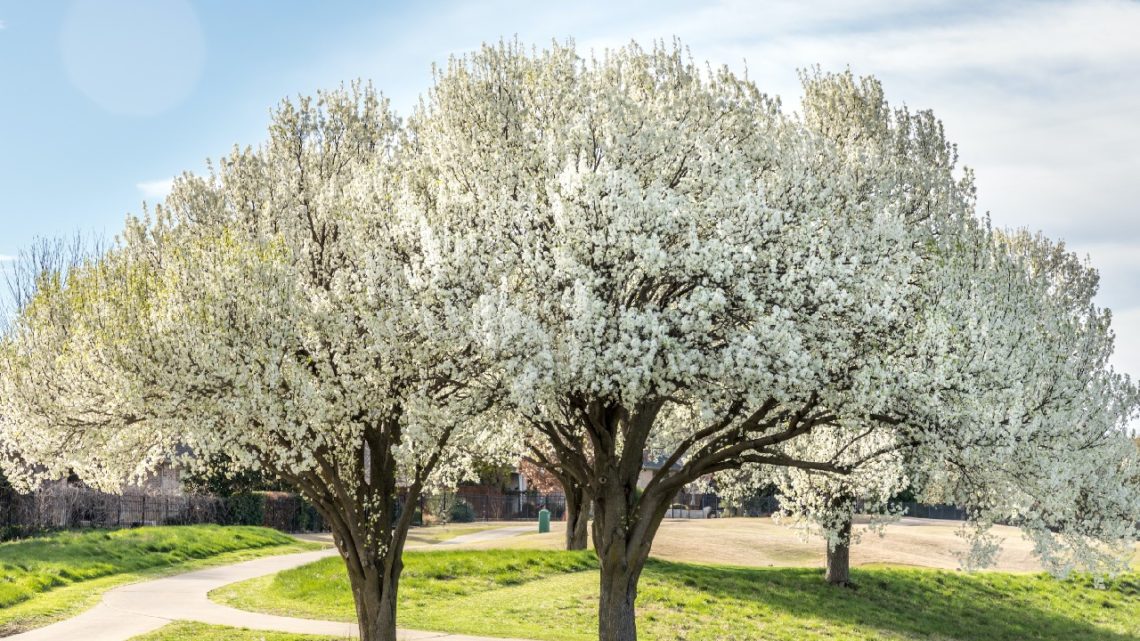It’s a wonderful idea to plant one tree in your yard. It makes the place beautiful, gives shade as well, and contributes to the environment. However, not every tree is suitable for home landscapes. Others may cause damage to your property, invite pests, or even become uncontrollable. Gardening and landscaping experts advise against these six trees in your yard:
1. Bradford Pear
Bradford Pear trees appear to be a beautiful selection at a glance. They produce beautiful white flowers in spring and grow rapidly. However, those advantages have severe issues. The branches of these trees are weak and break off easily in the storms, which may cause property damage. Adding to that, they are smelly, invasive, and unpopular long-term options. According to the experts, some of these communities have already embarked on the removal because of their rapid spread and domination of the natural vegetation.
2. Silver Maple
Silver Maples grow fast and have broad and shady leaves. However, their high development costs the environment. These trees grow shallow roots, which in most cases grow above the ground, destroying the sidewalks, driveways, and even the underground pipes. Their hardwood is also easily broken by the hurricanes, and this poses even greater chances of broken branches. The majority of landscapers point to slower-growing maples that are more stable and yard-friendly.
3. Silk Tree (Mimosa Tree)
Mimosa trees are flowers with delicate petals and pink flowers. However, they carry more problems than beauty. They bear loose seed pods, they are subject to webworms, and are susceptible to disease, which cuts their life span. They are also very fast-growing and may be invasive, spreading out of your yard and into the surrounding areas. When they begin to appear all over the place, they become difficult to manage.
4. Tree of Heaven
Even though its name sounds very nice, the Tree of Heaven is among the most aggressive and invasive trees in North America. Having originated in China, this tree grows quickly and can live practically in anything; however, this is not a good quality. It grew fast and displaced native plants. Better still, it emits a toxin that damages the surrounding trees and vegetation. It is also the preferred habitat of the spotted lanternfly, which damages trees, crops, and gardens.
5. Weeping Willow
Weeping Willows are beautiful in pictures; however, they are high-maintenance in life. They require a great amount of water and usually occur around water bodies such as ponds or rivers. Planted in a normal yard, their roots will go into hunting mode, searching desperately for water and will usually enter sewer lines and septic tanks. The trees also shed a lot of twigs and leaves all year round, leaving quite a big mess that is not easy to clean up.
6. Leyland Cypress
Leyland Cypress trees are popular as privacy hedges among many homeowners since they grow fast. However, this tree is too high, grows too quickly, and is difficult to maintain in a small garden. It is also prone to diseases and pest attacks, and they tend to plant the seedlings too close to each other. When a single tree is infected, it may move fast and destroy the whole row. The short-term solution of invading privacy becomes a costly issue over time.
Explore more travel, lifestyle, and fashion blogs on Discovered.TV – Your one-stop destination for out-of-the-box content!





